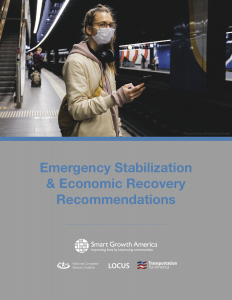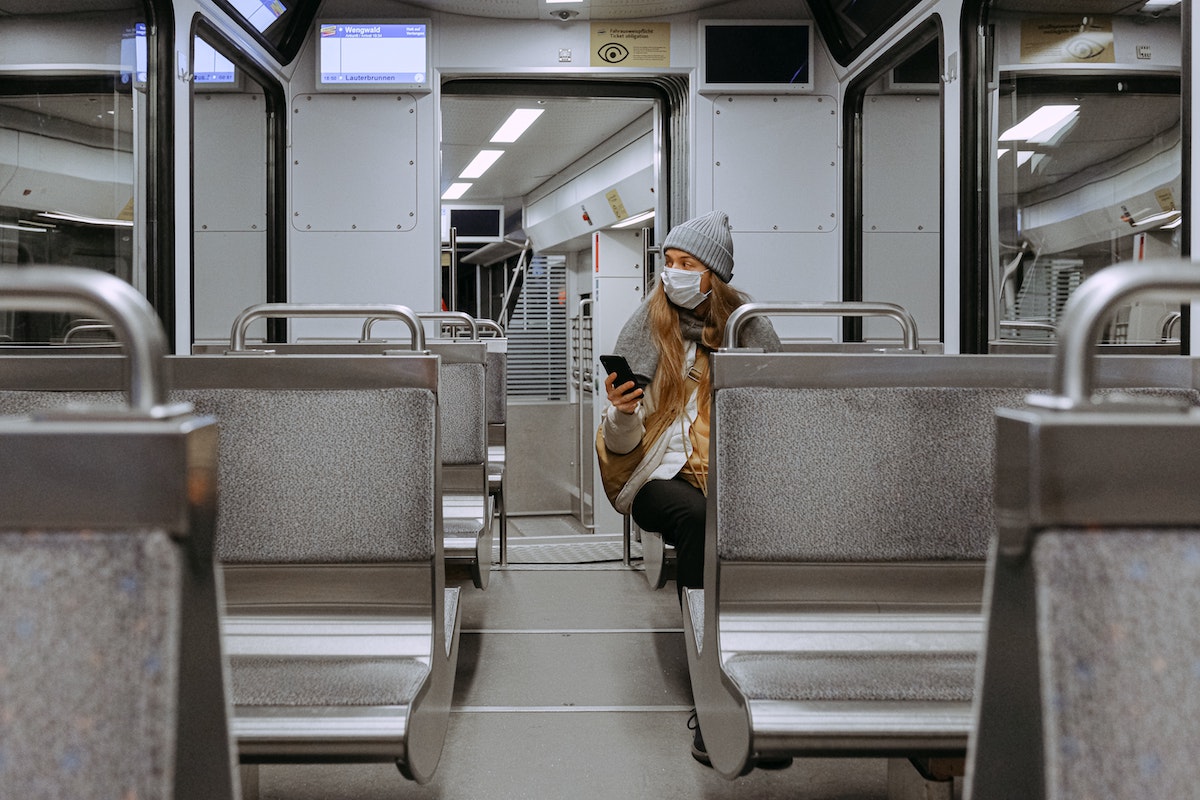We can build a better stimulus package. Here’s how.
Smart Growth America’s recommendations for the federal COVID-19 response

After passing the largest stimulus in United States history in March—$2 trillion, with $25 billion in aid for transit agencies and $1 billion for passenger rail—members of Congress know that more is needed to protect the country from the immediate and long-term impacts of COVID-19.
With the economy crumbling and millions of Americans’ lives at risk, the U.S. can’t afford to waste this opportunity for relief. We can’t squander our money on programs that fail to create the most new jobs or build lasting economic prosperity. It’s critical that this funding go to investments that give all Americans the opportunity to live in places that are healthy, prosperous, and resilient.
As part of Smart Growth America, we contributed to a new short SGA report outlining 20 recommendations for any economic recovery package that will boost our economy and give Americans equitable, accessible, safe and low carbon transportation options into the future. Here’s a summary of the transportation-related recommendations—read the full list here.
Invest in projects that create the most jobs: that means maintenance, not expansion
Road or bridge repair and maintenance projects actually create more jobs than building new capacity. In fact, roadway maintenance creates 16 percent more jobs per dollar compared to roadway expansion.
Give transit and passenger rail operating support, not just capital funds
The limited federal funds that public transportation receives annually are only for maintenance and construction. With ridership plummeting and costs for cleaning vehicles and protecting personnel skyrocketing—as well as the fallout from a rapidly contracting economy—transit and passenger rail need operating funds to keep service running. The $25 billion for transit and $1 billion for passenger rail Congress provided in last week’s stimulus is a great start, but both public transportation and passenger rail will likely need more.
Expand transit and passenger rail
The focus of any stimulus package should be creating the most jobs per dollar, and capital funding for transit and rail creates far more jobs than road projects. Every $1 billion invested in public transit creates more than 50,000 jobs and economic returns of $3.7 billion over 20 years. Public dollars devoted to making capital improvements to public transportation systems also support thousands of manufacturing jobs, in communities small and large, in nearly every state across the country. It’s hard to beat that.
Give public transportation at least $32 billion in emergency relief
In the time since we wrote these recommendations, the transit industry has come together to request at least $32 billion in emergency relief funding from Congress. The COVID-19 pandemic has obliterated transit’s main funding sources, to the point to which many transit agencies will be forced to dramatically cut service—and some smaller operators forced to cease all operations permanently. This $32 billion is critical to help transit agencies survive this fiscal crisis and continue to connect riders to the things they need, including millions of essential workers.
Download the report
Interested in economic stimulus programs? Check out our report “Learning from the 2009 Recovery Act: Lessons and recommendations for future infrastructure stimulus.”




















